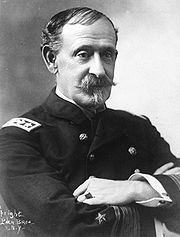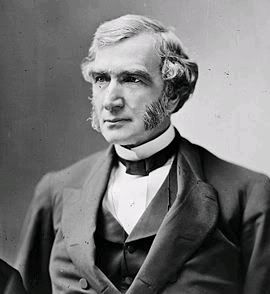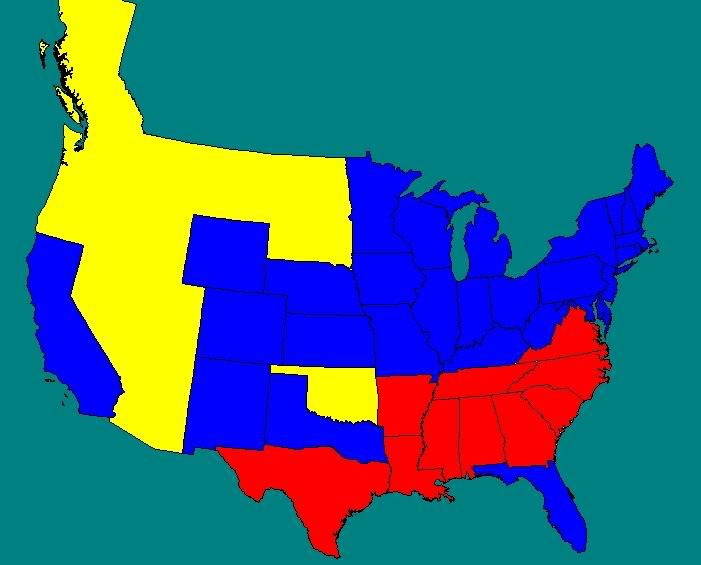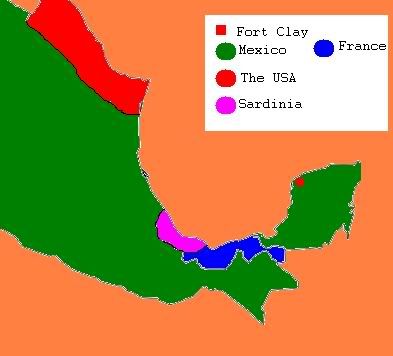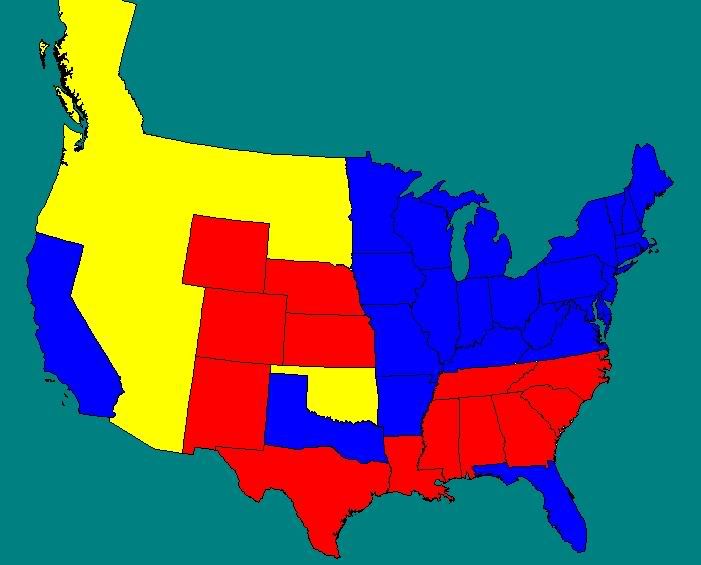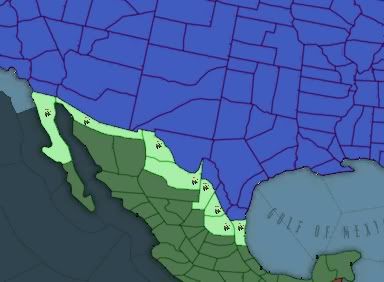I'm in Eastern Standard Time (GMT -5), but that wont help you. I update all sorts of weird hours when I am at work.
In the Navy and the Yellow War
--
Winfield Scott Schley, a US Naval Academy graduate, was appointed as President Ewing's Secretary of the Navy. He served in the Civil War and then went on to work with the academy. Schley knew that with the end of the civil war, the US Navy had to get modern fast. The power of the old navy was proven obsolete when a German ironclad navy devastated the French fleet in a matter of hours. Schley ordered the first major production of modern vessels. The USS Delaware put to see in November of 1874, and in a war game in the Gulf of Mexico, roundly defeated a fleet of 5 old style battleships. Schley then had to convince congress to approve the new changes. This was were Schley ran into the greatest challenge, because many in Congress were tired of war and conflict, instead they wanted money to rebuild.
Schley did achieve one of his major goals, and that was the birth of the Pacific fleet. Congress approved the foundation of the Los Angeles Naval Dock, eventually called LAND. The naval base gave birth to the US Pacific Fleet, led by the USS Delaware itself. The base started small, but it was the demarcation point for naval voyages to Hawaii and the Pacific, specifically Japan were US merchants began to control international trade with the isolated nation,. Schley wanted to continue his success into the Atlantic, but Congress refused to increase his funding. Instead they aided in the growth of railroads in Pennsylvania and the Mid-West, to increase the industrial strength of the North.
Winfield Scott Schley
Meanwhile a swell was building in the US. Mexico was wracked by war throughout the 60s and 70s, during that time the US was unable to enact the Monroe Doctrine, and Europeans gained control of Central American lands. Mexico lost control of territories to European nations, including France and the kingdom of Sardinia. France, though battered by the war with Germany, was tied to the US and Mexico through trade, Sardinia was not. Thus it was easy for Joseph Pulitzer to spark a controversy. Pulitzer was unhappy with Ewing's neutral stance towards much of the conflict in the world, and specifically towards Mexico. Although Ewing and the Congress signed a treaty of alliance with Mexico, he was unwilling to enforce it. Pulitzer, who was developing a new style of sensationalist journalism, turned on his former ally.
With headlines such as "Italian Atrocities" and "Murder in Mexico", Pulitzer sold the idea that the Europeans were destroying the poor American democracy. Ewing fired Pulitzer from his staff, which only increased his sales. Ewing, now without a political future, ignored him. Other candidates did not. Sheridan, with his strong anti-South policies, blasted the idea of war with Sardinia as hasty and dangerous. The leading Democrats likewise were opposed to any such war. Only one Republican leader took the mantle of a hawk. Justin Smith Morrill, a senator from Vermont, truly believed he needed to come to the aid of the nation of Mexico.
Justin Smith Morrill
Morrill's stance caused him to be swept up by a growing surge of public opinion. His previous support for Land Grant colleges and strongly supported legislation caused him to gain popularity in many circles within Washington. He did not have the support of many of the industrialists, until it was obvious which way the wind was blowing. When Morrill defeated Sheridan in the Republican primary, he was hailed as the next great president. To run against him the Democrats chose George Goldthwaite, a political non-entity from Alabama. The election went swiftly to the Republicans once again, and even many in the South became swept up in the drive to liberate American lands from European invaders. Although the North-South divide was still dramatically present, some of the old barriers fell before the common drive for war.
The Election of 1876
Democrat George Goldthwaite and Samuel J. Tilden- 86
Republican Justin Smith Morrill and Rutherford B. Hayes- 281